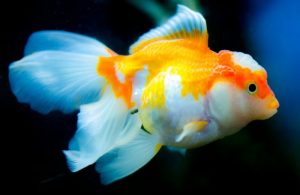For many aquarium enthusiasts, making the change from a freshwater fish tank to a full marine set up is a leap too far; however, there is an in-between stage that you can try if you fancy a change and want to experiment – a brackish fish tank.
Brackish is in between freshwater and full marine water – it occurs naturally where freshwater meets the sea, so in streams and rivers. It refers to the salt levels in the water and is halfway between the two extremes.
But don’t worry, it’s a pretty easy tank to look after as the fish which naturally live in this type of water are very adaptable to changes in their water environment which means you can create an amazing tank.
For better tips, we turned to the experts of Aquacadabra, and they listed the things you should consider when setting up this type of fish tank.
What size of a fish tank do you need?
A brackish fish tank can be any size as long as it’s suitable for the type of fish that you want to house in it. You can go from a tiny nano tank to an enormous container – it makes no difference as long as the fish have enough room to swim.
What about the water?
The water for a brackish tank needs to be hard and ideally with a pH level of 7.2 up to 8.5. The water gravity needs to be 1.005-1.020, and the temperature should be around 23-29°C – you will most likely need a heater to maintain the warmer temperature.
 How do I create the right salinity levels?
How do I create the right salinity levels?
When setting up a brackish tank, you need to mix the salt and water together first, before you add the water into the container. If you fill your tank and then add salt in you will damage your plants. You need to remove your fish until the liquid has gone through the cycle process.
Make sure you add the salt and water together in a bucket outside of the tank, using around 10 grams of salt for every liter of water. You need to pour the water into the bucket and heat it to the same temperature as your tank first.
Once the water is at the right temperature, add in the appropriate amount of salt slowly, stirring regularly to make sure it all dissolves. You can then add it to the tank gradually, making sure all of your levels are correct.
You need to leave the tank for around a week to allow it to settle and then you can start to add the new water and introduce the fish to their new home. If you are switching an existing tank to become a brackish tank you need to do it very gradually, over several weeks.
How do I maintain a brackish tank?
A brackish tank is easier to maintain than a saltwater tank.
You need to keep the temperature and gravity of the water maintained, and you need to make sure you use the correct marine salt mixture to achieve the best results. Make sure any equipment you use is suitable for use in a saltwater tank, including the heater and filter. Otherwise, the salt could damage it.
You can use regular gravel or stone for the bottom of a brackish tank as well as driftwood, and other suitable decorations to make it more homely for your fish and the fish which thrive in this type of environment are naturally very adaptable.
How do I keep my brackish fish tank clean?
Setting up a brackish fish tank is not a difficult endeavor, and it can help to pave the way for moving from freshwater fish to marine fish for many aquarists who don’t want to take the full leap in one go.
Once you have your tank set up, you need to maintain a regular cleaning schedule to help keep it healthy. You will need to clear debris and replace a percentage of the water every week with some new saltwater mix, taking care to maintain all of the correct levels.
It’s essential to keep an eye on the salt levels regularly because water evaporation will leave your tank too salty so keep an eye on it. You also need to clean your tank and change the filter frequently to prevent debris build-up.
As long as you run a regular clean and maintenance routine and keep an eye on all of the levels you need to measure within the water, caring for your brackish tank will become second nature very quickly.
As brackish fish are so adaptable, they are easy to look after and don’t require quite so much maintenance as a full marine tank would, providing the ideal path towards running a marine aquarium without the stress.
Setting up the tank just takes some time and thought but very soon you will be up and running with a new tank and bright colored new species to look after and take pleasure from watching, as well as your existing freshwater companions.


